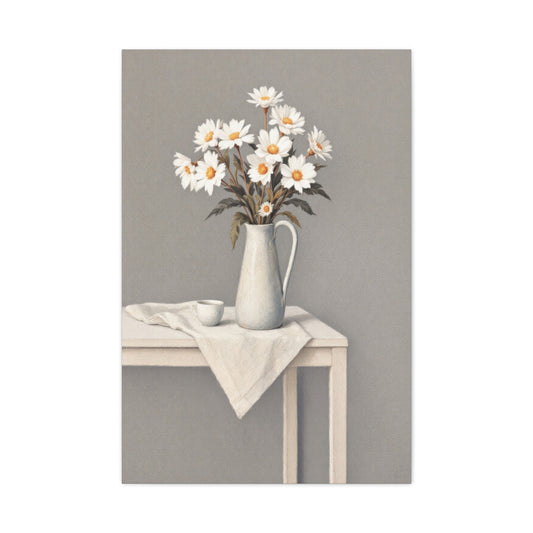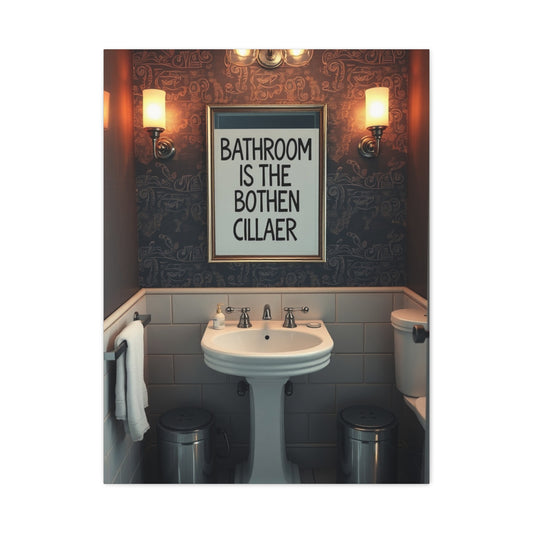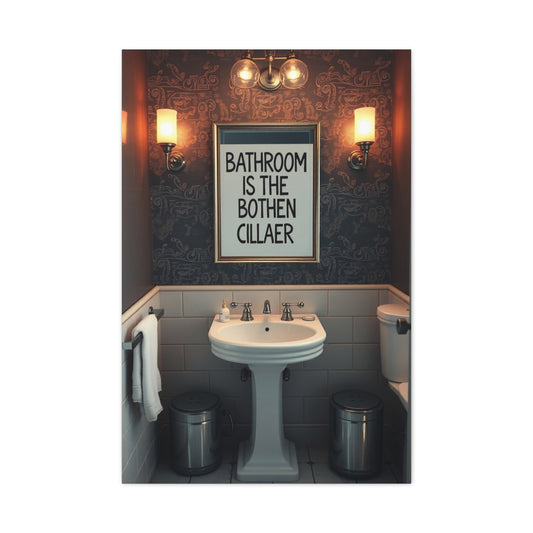Have you ever read about fashion mistakes made by celebrities? Even the most famous A-listers with access to high-end designers sometimes slip up and make errors in style. This concept is surprisingly relevant to kitchen design. A kitchen, like fashion, can either inspire confidence and admiration or create chaos and frustration. A well-planned kitchen motivates cooking, entertaining, and enjoying the space, while a poorly designed kitchen can feel cumbersome and inefficient. A modular kitchen adds elegance and functionality, transforming your cooking space into a hub that is as impressive as it is practical.
Kitchens are more than just areas for cooking; they are the heart of the home. From early morning breakfasts to elaborate dinner preparations, a kitchen must accommodate a variety of activities. The design must balance aesthetics and functionality. Planning a kitchen is exciting but challenging. Choosing cabinets, colors, layouts, and finishes requires attention to detail, and rushing these decisions can lead to mistakes that affect usability and longevity. Avoiding common design pitfalls will ensure your kitchen is functional, attractive, and enjoyable for years to come.
Optimizing Your Kitchen Work Triangle
The concept of the kitchen work triangle is fundamental in achieving an efficient layout. The work triangle connects the three primary elements: the stove, sink, and refrigerator. These form the golden triangle, which ensures smooth movement and workflow during cooking. Maintaining an optimal distance of four to nine feet between these elements prevents congestion and reduces unnecessary steps. A poorly planned triangle can lead to cluttered spaces, increased effort, and even accidents.
It is important to avoid placing utensils, appliances, cabinets, or trash bins within the path of the triangle. Items that block movement not only create inconvenience but also increase the risk of tripping or bumping into objects while cooking. Conversely, a triangle with elements too far apart results in inefficient cooking processes and wasted time. Proper planning ensures that your kitchen workflow is streamlined, making meal preparation faster, easier, and more enjoyable.
Planning Adequate Storage
Storage is one of the most critical aspects of kitchen design. A common mistake in both new kitchens and remodels is failing to plan sufficient storage. Kitchens require space for food packaging, containers, appliances, cleaning supplies, and utensils. Without adequate storage, countertops become cluttered, and the space loses both its functionality and aesthetic appeal.
Cabinets should be designed with a combination of drawers, shelves, and specialty racks to accommodate specific items. Even in smaller kitchens, maximizing vertical and hidden spaces can make a significant difference. Installing cabinets that hide unsightly wires and appliances keeps surfaces clean and organized. Planning storage thoughtfully ensures that all items have a dedicated place, reducing clutter and creating a visually appealing environment.
Allocating Space for Appliances
Another common kitchen design mistake is insufficient space for appliances. Storing utensils and pots is essential, but appliances such as mixers, blenders, and toasters also need dedicated space. Countertops must remain functional to accommodate these appliances while providing areas for food preparation. Poorly planned counter space can lead to crowded work areas, making cooking frustrating and inefficient.
Designing multiple cooking workstations can help alleviate congestion and make meal preparation more fluid. A well-planned countertop layout accommodates appliances while leaving enough room for chopping, mixing, and assembling dishes. Prioritizing workspace is crucial for a functional kitchen, especially in households that cook frequently or entertain guests regularly.
Ensuring Proper Lighting
Lighting plays a critical role in kitchen functionality. Inadequate lighting not only affects the visual appeal of the space but also hampers efficiency and safety. The ideal kitchen lighting plan incorporates three types: ambient, accent, and task lighting. Ambient lighting provides general illumination, ensuring the space is well-lit for overall activities. Task lighting focuses on preparation zones, highlighting work areas where precision is required. Accent lighting under cabinets or around counters adds dimension and enhances the design aesthetic.
Failing to include all three lighting types results in a poorly illuminated kitchen. Dim lighting can make cooking difficult and unsafe, even when using the best ingredients or equipment. Properly planned lighting enhances both functionality and ambiance, making the kitchen a comfortable and inviting space for cooking and socializing.
Ventilation and Air Quality
A kitchen requires effective ventilation to maintain a healthy and comfortable environment. Cooking generates heat, steam, and odors, which can accumulate and make the space unpleasant. Without proper airflow, airborne particles, smoke, and food odors linger, compromising air quality and cleanliness. Windows, exhaust fans, and hoods play an essential role in maintaining ventilation.
Selecting the right size hood and ensuring proper clearance around cabinets and cooking areas allows efficient removal of smoke, heat, and odors. A well-ventilated kitchen promotes a safer, cleaner, and more comfortable cooking environment, preventing the accumulation of harmful particles and maintaining the overall quality of the space.
Dustbins and Waste Management
A well-organized kitchen is defined not only by its design and aesthetics but also by the management of waste. One of the most overlooked mistakes in kitchen planning is the placement of dustbins. A visible, poorly positioned, or unpleasant-smelling trash can can make an otherwise flawless kitchen appear messy and chaotic. The sight and odor of waste in the kitchen can disrupt the ambience and deter enjoyment while cooking or entertaining.
The ideal solution is to incorporate a concealed space for waste disposal. A hidden cabinet designed specifically for a trash bin keeps it out of sight while maintaining accessibility. In smaller kitchens, where space is limited, DIY solutions can be effective. Existing bins can be repurposed and enhanced with aesthetic coverings, paint, or stencils to blend seamlessly with the kitchen decor. Proper planning for waste management ensures that your kitchen remains hygienic, visually appealing, and clutter-free.
The design should also consider the segregation of waste for recycling and composting. In modern kitchens, multiple bins for biodegradable, non-biodegradable, and recyclable waste can be concealed in a single cabinet system. This setup promotes sustainable practices while maintaining a clean appearance. Integrating waste management into the kitchen design is not only functional but also encourages responsible habits.
Kitchen Layout and Positioning
Another major error in kitchen design is the poor positioning of appliances, cabinets, and countertops. An incorrectly laid out kitchen can lead to constant bumps, collisions, and inefficient movement. For example, opening a drawer only to have your knee hit a counter or facing limited space in front of a refrigerator can be frustrating. Adequate space planning is crucial to ensure comfort and usability.
A successful kitchen layout allows smooth movement and easy access to all areas. Space between appliances, countertops, and cabinets should be sufficient to perform tasks without obstruction. Workflows should be considered, such as moving from the refrigerator to the sink, then to the stove, without unnecessary backtracking. Discussing these requirements with a designer during planning is essential. They can offer solutions that maximize space, maintain ergonomic design, and ensure the kitchen functions as intended.
The kitchen layout should also accommodate multiple users. In homes where several people cook together, spacing becomes even more critical. A cramped design limits collaboration, whereas a thoughtfully planned layout allows seamless workflow for all users. Functionality, therefore, is as important as aesthetics when positioning elements in the kitchen.
Countertops and Work Surfaces
One of the most critical features of a kitchen is the countertop. Many kitchen design mistakes occur due to inadequate or poorly planned counter space. Countertops serve as preparation areas, storage for appliances, and visual focal points of the kitchen. Without sufficient surface area, cooking becomes cumbersome, and clutter accumulates.
When designing countertops, consider the number of workstations needed. Multiple zones for chopping, mixing, baking, or assembling dishes can prevent congestion. Countertops should accommodate essential appliances while still providing ample space for food preparation. Materials should be chosen carefully to balance durability, maintenance, and aesthetics. Natural stone, engineered surfaces, and high-quality laminates provide resilience against heat, moisture, and frequent use.
It is also important to maintain continuity in counter height and material. Uneven surfaces or incompatible materials can create awkward transitions, hinder workflow, and compromise the kitchen’s visual harmony. A well-planned countertop layout supports efficient cooking, storage, and cleaning, making the kitchen more practical and enjoyable for daily use.
Compromising on Quality
A frequent temptation during kitchen remodeling is to cut costs by opting for lower-quality materials. While budget management is important, compromising on quality can lead to long-term problems. Cabinets, countertops, and appliances experience significant wear and tear. Choosing substandard materials may save money initially, but it often results in repairs, replacements, and dissatisfaction in the long term.
Cabinets are a key example. As central storage units in a kitchen, they endure constant opening and closing, the weight of utensils, and exposure to moisture. High-quality cabinets ensure longevity, smooth operation, and a polished appearance. Similarly, selecting durable flooring, reliable plumbing fixtures, and well-constructed countertops contributes to a functional and enduring kitchen. Investing in quality materials upfront prevents frustration and costly fixes later.
Hiring Professional Help
Attempting to design and execute a kitchen remodeling project independently can be overwhelming. Kitchens involve multiple elements—flooring, cabinetry, lighting, ventilation, plumbing, and electrical systems—that require careful coordination. Without professional guidance, errors are almost inevitable. A lack of experience can result in design flaws, functional inefficiencies, and wasted resources.
Hiring a professional designer or contractor brings expertise, foresight, and practical solutions to the project. Professionals are familiar with common pitfalls, ergonomic standards, and material compatibility. They can provide advice on layout, workflow, storage solutions, and safety considerations. Although professional services may involve higher upfront costs, the investment ensures a smoother process, reduces mistakes, and delivers a functional, aesthetically pleasing kitchen.
Professional guidance is particularly valuable when dealing with complex installations, such as custom cabinetry, integrated appliances, or advanced ventilation systems. Designers can also assist in selecting durable materials and finishes that align with your style preferences while meeting practical requirements. Engaging professionals guarantees that your kitchen remodeling is executed efficiently, with minimal errors and maximum satisfaction.
Safety Considerations
Safety is a critical aspect of kitchen design that is often overlooked. Poor layout, inadequate lighting, insufficient ventilation, and cluttered counters can create hazards. Kitchens involve heat, sharp utensils, electrical appliances, and heavy objects, making them high-risk areas if not designed with safety in mind.
Ensuring adequate space between appliances, counters, and walkways prevents accidental collisions. Slip-resistant flooring minimizes the risk of falls, particularly in areas prone to spills. Proper lighting ensures visibility, reducing the likelihood of cuts, burns, or mishaps. Ventilation systems eliminate smoke and harmful fumes, improving air quality and minimizing respiratory risks.
Child safety is another important consideration for families. Cabinets with secure locks, corner protectors, and properly placed appliances prevent accidents. Electrical outlets should be strategically placed and protected to avoid contact with water. Safety-focused design ensures that the kitchen is not only functional and attractive but also a secure environment for all members of the household.
Efficient Use of Space
Efficient utilization of space is a hallmark of excellent kitchen design. Many kitchens fail to maximize available space, resulting in cluttered countertops, congested work areas, and storage challenges. Thoughtful design considers vertical and horizontal spaces, incorporating innovative storage solutions such as pull-out racks, corner drawers, and overhead cabinets.
Optimizing space allows kitchens to accommodate all necessary tools, utensils, and appliances without crowding the area. It also ensures that frequently used items are easily accessible, reducing the time and effort required for meal preparation. An efficient kitchen design balances storage, functionality, and aesthetics, creating an environment that is organized, visually appealing, and highly practical.
Kitchen Lighting Mistakes to Avoid
Lighting is a critical aspect of kitchen design that directly affects functionality and aesthetics. A poorly lit kitchen can feel cramped, uninviting, and unsafe. Many homeowners make the mistake of relying solely on general overhead lighting, which often fails to illuminate essential work areas. Proper lighting enhances visibility for cooking, cleaning, and food preparation while creating an atmosphere that is both warm and welcoming.
The three primary types of kitchen lighting—ambient, task, and accent—should work together seamlessly. Ambient lighting provides overall illumination for the room, ensuring a consistent level of brightness throughout. Task lighting focuses on specific areas such as countertops, sinks, and stove tops, where precision is required. Accent lighting adds visual interest and highlights architectural or design features. Overlooking any of these layers can result in shadows, glare, and discomfort during cooking.
Lighting placement is equally important. Fixtures should be strategically located to avoid casting shadows on work surfaces. Under-cabinet lights, pendant lamps over islands, and recessed lighting in ceiling panels can all contribute to a well-balanced lighting scheme. Selecting energy-efficient LED options not only reduces electricity consumption but also offers long-lasting brightness and adjustable color temperatures, enhancing both practicality and style.
Appliance Placement and Accessibility
The placement of appliances is another critical factor in kitchen design. Improperly positioned appliances can disrupt workflow, create bottlenecks, and reduce efficiency. Homeowners often store utensils and cookware efficiently but fail to allocate enough space for frequently used appliances such as mixers, blenders, coffee machines, and toasters. Without proper consideration, countertops become cluttered, leaving little room for food preparation.
An ideal kitchen layout allows appliances to be accessible yet unobtrusive. Counters should provide sufficient workspace while accommodating appliances without overcrowding. Consider multiple cooking stations or zones where specific appliances are grouped according to their function. This prevents congestion and allows multiple users to work simultaneously. Incorporating pull-out shelves or appliance garages can also keep countertops tidy while maintaining convenience.
Appliance placement should also account for safety and ergonomics. Heavy or bulky items should be stored at waist level to prevent strain, while frequently used devices should be easily reachable. Clearances around ovens, microwaves, and refrigerators are necessary to ensure safe and efficient use. Planning these details prevents common mistakes and enhances both usability and comfort in the kitchen.
Countertop Workflow and Zones
Countertops are the primary work surfaces in the kitchen, and their layout directly impacts workflow efficiency. Many design mistakes arise from insufficient or poorly planned counter zones. A well-organized kitchen should include designated areas for food preparation, appliance use, plating, and cleaning. Without clearly defined zones, activities can overlap, causing clutter, delays, and frustration.
Consider creating multiple workstations to accommodate different cooking tasks simultaneously. For instance, one zone can be dedicated to chopping and preparation, another tomixing and blending, and a separate area for plating or assembling dishes. Workstations should be equipped with the necessary tools and appliances, ensuring that each task can be performed efficiently without interfering with other activities.
The material of countertops is also critical. Durable surfaces resistant to heat, moisture, and scratches improve functionality and longevity. Options such as natural stone, engineered quartz, or high-quality laminates provide a balance of practicality and visual appeal. Maintaining a consistent surface height and texture across all zones prevents awkward transitions, supporting smooth and efficient workflow.
Ventilation and Airflow Considerations
Proper ventilation is essential for a safe and comfortable kitchen. Cooking produces heat, smoke, odors, and airborne particles, which, if not managed properly, can make the kitchen environment unpleasant and potentially hazardous. Many kitchens suffer from poor airflow due to insufficient vents, windows, or exhaust systems, leading to lingering smells and reduced air quality.
Effective kitchen ventilation relies on a combination of natural and mechanical systems. Windows should be positioned to encourage cross-ventilation, allowing fresh air to circulate while expelling heat and odors. Exhaust hoods above stoves remove smoke and airborne particles, preventing buildup in the room. When selecting a hood, consider its size, clearance, and airflow capacity to ensure optimal performance.
Mechanical ventilation should complement natural airflow. Properly installed exhaust fans and ducting systems reduce heat, humidity, and odor accumulation, improving overall comfort. Good ventilation also protects cabinetry, walls, and ceilings from damage caused by moisture and grease. A well-ventilated kitchen promotes a healthier, cleaner, and more enjoyable cooking environment.
Ergonomics and Movement Flow
Ergonomics playss a crucial role in kitchen functionality. A poorly designed kitchen can strain the body, create inefficiencies, and lead to frustration during daily use. Common mistakes include placing frequently used items at inconvenient heights, designing narrow walkways, or ignoring the natural movement flow within the space.
Ergonomic design considers the reach, height, and movement of the user. Frequently used utensils, appliances, and ingredients should be stored at waist or eye level to reduce bending, stretching, or overreaching. Cabinets, drawers, and pull-out shelves should be designed to minimize strain and facilitate easy access. Walkways should provide enough space for one or more people to move freely without obstruction.
The kitchen work triangle is integral to ergonomics, connecting the stove, sink, and refrigerator efficiently. However, movement flow extends beyond the triangle. Consider daily routines, such as unloading groceries, washing dishes, and preparing meals, when planning layouts. An ergonomically designed kitchen improves comfort, reduces fatigue, and enhances the overall cooking experience.
Lighting and Ventilation Integration
Lighting and ventilation are often treated as separate design elements, but integrating them can enhance kitchen performance. Combining natural light with strategically placed task lighting improves visibility while complementing airflow design. For example, windows near the stove or sink provide daylight and assist in air circulation. Similarly, vent hoods with built-in lighting illuminate cooking zones while maintaining proper exhaust.
Integration also improves energy efficiency. Natural light reduces the need for artificial illumination during daytime, while efficient ventilation systems reduce dependence on mechanical cooling. Thoughtful integration ensures that the kitchen is bright, airy, and comfortable, minimizing design mistakes related to poor illumination or stale air.
Storage for Appliances and Utensils
In addition to general storage, planning dedicated spaces for appliances and utensils is critical. Kitchens often suffer from cluttered counters due to the lack of accessible storage for small appliances. Properly designed cabinets, shelves, and drawers prevent congestion while maintaining a clean and organized appearance.
Consider incorporating appliance garages, pull-out trays, and custom compartments for specific items. This not only improves aesthetics but also enhances usability. Frequently used tools should be within reach, while rarely used items can be stored higher or deeper in cabinets. Efficient storage solutions reduce clutter, streamline workflow, and maintain the kitchen’s visual appeal.
Planning for Multiple Users
Modern kitchens often serve multiple cooks simultaneously. Designing for a single user can create conflicts, congestion, and inefficiency when more than one person is preparing meals. Adequate counter space, multiple workstations, and clear zones help multiple users work comfortably without interfering with each other.
Consider spacing between sinks, stoves, and countertops to allow independent movement. Multiple sinks, prep areas, and appliances may be incorporated into larger kitchens to facilitate teamwork. Even in smaller kitchens, thoughtful zoning ensures that multiple users can collaborate effectively. Planning for multiple users enhances functionality and reduces frustration during meal preparation or entertaining.
Color, Texture, and Material Coordination
Color and material selection aree often considered secondary to function, butheyit significantly impact the perception of space and comfort. Poorly coordinated colors, textures, or finishes can make a kitchen feel disjointed, cluttered, or visually overwhelming. Selecting harmonious combinations enhances both aesthetics and functionality.
Materials should also be chosen for durability and maintenance. High-traffic areas such as countertops, floors, and cabinet doors require surfaces that withstand moisture, heat, and daily wear. Texture variations can add depth and visual interest, but excessive contrast or incompatible materials may create a chaotic appearance. Thoughtful coordination balances beauty and practicality, preventing design mistakes related to mismatched or low-quality finishes.
Kitchen Safety and Accessibility
Safety is a recurring theme in kitchen design. Beyond general ergonomics, specific safety considerations prevent accidents and injuries. Placement of sharp tools, hot appliances, and heavy objects should minimize risk. Non-slip flooring, corner guards, and proper spacing contribute to a secure environment.
Accessibility is equally important, particularly for households with children, elderly members, or people with mobility challenges. Cabinets with easy-to-reach handles, pull-out shelves, and adjustable storage heights improve usability. Adequate lighting, clear walkways, and intuitive layouts further enhance safety. A kitchen that prioritizes safety and accessibility ensures a pleasant cooking experience for all users.
Professional Design Guidance
Many kitchen mistakes can be avoided with professional guidance. Designers and contractors offer expertise in layout, workflow, materials, lighting, ventilation, and safety. They can anticipate challenges, suggest solutions, and coordinate complex elements for optimal results. Professional involvement reduces errors, ensures functionality, and enhances overall kitchen aesthetics.
Professionals can also advise on budget management, material selection, and installation techniques. Their experience helps balance style, practicality, and durability, delivering a kitchen that meets both functional and visual expectations. Engaging a professional ensures that mistakes are minimized, timelines are respected, and the final result is a high-quality kitchen.
Cabinetry Design Mistakes
Cabinets are the backbone of a functional kitchen, yet many homeowners make critical mistakes in selecting and placing them. Cabinets not only provide storage but also contribute significantly to the overall aesthetic. Poor-quality materials, inadequate planning, and incorrect placement can compromise both usability and visual appeal.
One common error is choosing cabinets that do not match the scale of the kitchen. Oversized cabinets in a small kitchen can dominate the space, making it feel cramped and cluttered. Conversely, small cabinets in a large kitchen may leave too much unused wall space, reducing storage efficiency and creating imbalance. Selecting appropriately sized cabinets ensures optimal storage without compromising the sense of openness.
Material selection is equally important. Low-quality materials may save money upfront but often result in warping, chipping, and premature wear. Investing in durable materials such as solid wood, high-quality plywood, or engineered materials enhances longevity and resilience. Finishes should complement the overall kitchen design, balancing color, texture, and durability to maintain a cohesive and functional space.
Cabinet Placement and Accessibility
The placement of cabinets is crucial for kitchen functionality. Poorly positioned cabinets can interfere with workflow, reduce accessibility, and create visual clutter. Upper cabinets should be installed at a height that allows easy reach, while lower cabinets should accommodate storage needs without hindering movement.
Corner cabinets are particularly challenging and often underutilized. Incorporating solutions such as lazy Susans, pull-out trays, or diagonal shelves maximizes storage in these areas. Similarly, tall pantry cabinets should have pull-out mechanisms to ensure accessibility to items stored at the back. Thoughtful cabinet placement ensures that storage is both practical and ergonomic, preventing unnecessary strain and frustration.
Drawer and Shelf Organization
Cabinet interiors are as important as their exteriors. Many kitchens fail to optimize drawers and shelves, leading to cluttered storage and inefficient use of space. Drawers should be deep enough to hold utensils, cutlery, and small appliances while remaining easy to open and close. Dividers, trays, and organizers help maintain order and accessibility.
Shelves should be adjustable to accommodate items of varying sizes, from plates and bowls to large pots and containers. Pull-out shelves and sliding racks provide easy access to items stored in the back, reducing the need to reach or bend awkwardly. Proper internal organization transforms cabinets into efficient storage solutions, improving workflow and reducing clutter on countertops.
Flooring Mistakes in Kitchens
Flooring is another critical component often overlooked in kitchen design. Selecting the wrong material or color can affect both functionality and aesthetics. Many homeowners choose materials based solely on appearance without considering durability, maintenance, or safety.
The ideal kitchen flooring should be durable, easy to clean, and resistant to moisture and heat. Options such as ceramic tiles, engineered wood, vinyl, or natural stone provide longevity and practicality. Slip-resistant surfaces enhance safety, particularly in areas prone to spills. The color and pattern of flooring should complement the overall kitchen design, creating a harmonious and visually appealing environment.
Placement and transitions are also important. Flooring should be level throughout the kitchen to prevent tripping hazards. Transitions between different rooms should be smooth, ensuring continuity and ease of movement. Thoughtful flooring choices enhance the functionality, safety, and aesthetics of the kitchen space.
Modular Kitchen Integration
Modular kitchens have become increasingly popular due to their flexibility, efficiency, and modern appeal. However, integrating modular components improperly can lead to functional and visual issues. Many homeowners select modular units without considering workflow, accessibility, or aesthetic harmony.
Modular kitchens allow for customization of cabinets, drawers, and work surfaces. It is important to plan the layout carefully, ensuring that each module aligns with the overall kitchen workflow. Stovetops, sinks, and refrigerators should be positioned to maintain the efficiency of the work triangle. Counter space should be allocated strategically, allowing ample room for food preparation and appliances.
The modular approach also enables better storage solutions. Pull-out drawers, corner units, and vertical racks can be incorporated to maximize space. Choosing high-quality modular components ensures durability, smooth operation, and long-lasting visual appeal. Proper planning and execution make modular kitchens both functional and stylish.
Countertop Material Selection
Countertops are central to both aesthetics and functionality in a modular kitchen. Many homeowners make the mistake of prioritizing appearance over durability. Countertop materials must withstand daily use, exposure to heat, moisture, and frequent cleaning.
Options such as granite, quartz, and engineered stone are durable, resistant to stains, and visually appealing. Laminates provide a budget-friendly alternative while maintaining a polished look. Wood and concrete can add unique charm but require proper maintenance to prevent damage. Choosing the right material ensures that countertops remain both practical and attractive over time.
The integration of countertops with modular cabinets should be seamless. Proper alignment, overhangs, and edge finishes improve both functionality and aesthetics. Thoughtful material selection and installation contribute to a cohesive, durable, and visually pleasing kitchen environment.
Efficient Storage Solutions
Effective storage is a hallmark of a well-designed kitchen. Many kitchens fail to fully utilize available space, resulting in cluttered countertops and disorganized cabinets. Innovative storage solutions can transform even small kitchens into highly functional spaces.
Pull-out shelves, vertical dividers, and custom inserts allow for organized storage of utensils, pots, pans, and appliances. Overhead cabinets can house infrequently used items, while frequently accessed tools should be stored within easy reach. Dedicated spaces for cutting boards, knives, and spice racks improve accessibility and efficiency.
Corner units, pantry cabinets, and hidden compartments maximize storage in areas that are often underutilized. A well-organized kitchen reduces stress during meal preparation, keeps surfaces clear, and enhances both aesthetics and functionality.
Ventilation and Airflow in Modular Kitchens
Even in modular kitchens, ventilation is a critical consideration. Cooking produces heat, steam, smoke, and odors, which can accumulate and affect both comfort and air quality. A well-designed ventilation system maintains a pleasant and healthy kitchen environment.
Windows, exhaust hoods, and fans should be integrated into the modular layout to ensure optimal airflow. Placement of vents should consider the location of cooking appliances and work areas to efficiently remove smoke and fumes. Proper ventilation protects cabinetry, walls, and ceilings from moisture and grease while improving overall kitchen hygiene.
Natural ventilation through windows and vents enhances air circulation, while mechanical systems handle persistent heat and odors. Integrating both solutions ensures a kitchen that is comfortable, healthy, and efficient.
Aesthetic Balance and Design Harmony
Achieving aesthetic balance is often a challenge in kitchen design. Poor coordination between cabinets, countertops, flooring, and appliances can create visual clutter or imbalance. Color schemes, textures, and materials must be chosen carefully to create a cohesive and harmonious environment.
Consistency in style across cabinets, countertops, flooring, and hardware enhances visual appeal. Contrasting textures and complementary colors can add depth and interest without overwhelming the space. Proper lighting and placement of design elements further enhance the overall aesthetic. Attention to these details prevents a disjointed look and creates a visually satisfying kitchen.
Lighting and Task Efficiency
In modular kitchens, lighting should be strategically integrated with work zones. Proper illumination of countertops, stovetops, and sinks enhances efficiency and safety. Task lighting under cabinets, pendant lights above islands, and recessed ceiling lights contribute to a well-lit environment that supports seamless cooking and cleaning activities.
Poor lighting can lead to shadows, eye strain, and accidents. Integrating layered lighting solutions ensures that every area of the kitchen is adequately illuminated. This enhances usability, safety, and the overall experience of the space.
Professional Installation and Maintenance
Even the best-designed kitchen can fail if installation is poor. Cabinets, countertops, flooring, and appliances must be installed with precision to ensure functionality and longevity. Professional installation minimizes errors, maintains alignment, and ensures that all components operate smoothly.
Regular maintenance is equally important. Hinges, drawer slides, countertops, and appliances require periodic checks to maintain performance. Preventive maintenance extends the lifespan of kitchen elements and preserves both functionality and aesthetics. Consulting professionals for installation and maintenance guarantees a kitchen that remains efficient, durable, and visually appealing over time.
Kitchen Ergonomics and Workflow
Modular kitchens offer flexibility, but workflow efficiency depends on careful planning. Appliances, cabinets, countertops, and storage solutions must be positioned to facilitate movement and reduce unnecessary steps. The work triangle—stove, sink, and refrigerator—remains central, but other zones for prep, cooking, and cleaning should be clearly defined.
Ergonomic considerations include countertop height, cabinet reach, and spacing between workstations. These factors reduce physical strain and support a smooth workflow. Designing a kitchen that prioritizes ergonomics ensures that daily tasks are comfortable, efficient, and enjoyable.
Advanced Storage Solutions in Kitchens
Effective storage is a cornerstone of functional kitchen design. While basic cabinets and drawers offer general storage, advanced solutions elevate efficiency and organization. Many kitchens fail to maximize storage potential, resulting in cluttered countertops and disorganized cabinets. Integrating innovative storage solutions ensures that every item has a designated space and supports a smooth workflow.
Pull-out shelves are particularly useful for deep cabinets, allowing full access to items at the back without the need for bending or reaching. Similarly, vertical dividers for baking sheets, cutting boards, and trays prevent stacking, making retrieval easier and maintaining order. Corner cabinets, often overlooked, can be transformed with rotating lazy Susans or pull-out racks to maximize otherwise wasted space.
Appliance garages, hidden compartments, and specialized drawers contribute to a clean, organized environment. Storing small appliances in dedicated compartments prevents countertop clutter and maintains the kitchen’s visual appeal. A well-thought-out storage strategy not only improves efficiency but also enhances aesthetics by maintaining a clean and streamlined appearance.
Countertop Optimization
Countertops serve as both functional and visual anchors in the kitchen. A common mistake is insufficient counter space or poor allocation of work areas. Countertops must accommodate multiple activities, including food preparation, appliance use, and serving. Without adequate planning, workflow can become chaotic, causing congestion and frustration.
Designating specific zones on the countertop enhances efficiency. One area can be reserved for chopping and prepping, another for mixing and assembling dishes, and a separate zone for plating or storing frequently used appliances. Maintaining clear workspaces reduces interference between tasks, particularly in kitchens used by multiple people simultaneously.
Countertop material selection also plays a vital role in optimization. Durable surfaces such as granite, quartz, and engineered stone withstand heat, moisture, and heavy use while providing a visually cohesive look. Laminates offer a cost-effective alternative without compromising aesthetics. Proper alignment, edge finishing, and surface continuity ensure functional and visually appealing work areas that stand up to daily use.
Appliance Workflows
The placement of appliances significantly impacts kitchen efficiency. Many design mistakes arise from failing to consider appliance workflows in relation to preparation, cooking, and cleaning zones. Proper appliance positioning ensures seamless movement and reduces unnecessary steps during meal preparation.
The kitchen work triangle—connecting the stove, sink, and refrigerator—remains central to efficient workflow. Beyond this, other appliances such as dishwashers, microwaves, and ovens should be strategically placed to support the cooking process. Creating multiple cooking zones or stations can facilitate simultaneous tasks for households with multiple cooks.
Accessibility and ergonomics are also critical. Frequently used appliances should be within easy reach, while heavy or bulky items should be stored at waist level to prevent strain. Proper spacing around appliances ensures safe operation and prevents congestion, contributing to a functional and enjoyable cooking environment.
Lighting for Task Efficiency
Lighting is both a practical necessity and an aesthetic tool in the kitchen. Inadequate lighting can lead to inefficiencies, accidents, and reduced enjoyment. Integrating ambient, task, and accent lighting ensures that the kitchen is well-illuminated for all activities.
Task lighting focuses on critical work areas such as countertops, stovetops, and sinks, providing clear visibility for food preparation, cooking, and cleaning. Under-cabinet lighting is particularly effective, illuminating surfaces without casting shadows. Ambient lighting creates overall brightness in the room, while accent lighting highlights architectural features or design elements.
Energy-efficient LED solutions provide longevity, adjustable brightness, and color temperature control, contributing to both practicality and ambiance. Layered lighting strategies ensure that every corner of the kitchen is functional, visually appealing, and conducive to safe and efficient cooking.
Ventilation and Air Quality Management
Proper ventilation is essential for maintaining a healthy and comfortable kitchen environment. Cooking generates heat, smoke, moisture, and odors, which can accumulate and compromise air quality. Kitchens lacking effective ventilation can become uncomfortable, unhygienic, and potentially hazardous.
A combination of natural and mechanical ventilation ensures optimal airflow. Windows strategically placed allow cross-ventilation, while exhaust hoods above stoves efficiently remove smoke, grease, and airborne particles. Proper sizing, placement, and airflow capacity of vents prevent heat and odors from lingering, protecting both the kitchen and its occupants.
Mechanical ventilation complements natural airflow, particularly in kitchens with limited window access or high cooking volumes. Well-ventilated kitchens reduce the accumulation of harmful particles, maintain comfort, and protect cabinetry, walls, and ceilings from moisture and grease damage. Integrating effective ventilation is crucial for long-term kitchen health and usability.
Ergonomic Workflows and Safety
Ergonomics and safety are fundamental in designing a kitchen that supports efficiency and comfort. Poorly designed layouts can lead to physical strain, accidents, and frustration. Ergonomic considerations include countertop height, cabinet reach, appliance placement, and movement flow.
Frequently used items should be stored at convenient heights, minimizing bending or stretching. Walkways should allow free movement, even with multiple users. The work triangle must be optimized for ease of access to the stove, sink, and refrigerator, with additional attention given to secondary workstations for preparation and cleanup.
Safety measures include slip-resistant flooring, corner guards on counters, proper lighting, and strategically placed electrical outlets. Appliances should be installed with adequate clearance for safe operation, and heavy or sharp items should be stored securely. Ergonomics and safety work together to create a kitchen that is comfortable, efficient, and secure for all users.
Material Selection and Durability
Material choice significantly impacts the longevity and functionality of the kitchen. Many design mistakes stem from selecting materials based solely on aesthetics rather than durability and practicality. Cabinets, countertops, flooring, and fixtures must withstand daily use, exposure to moisture, heat, and wear.
High-quality materials such as solid wood, engineered stone, or stainless steel provide resilience and ease of maintenance. Laminates, high-pressure surfaces, and durable composites offer budget-friendly options without compromising performance. Finishes should be easy to clean, resistant to staining, and complement the overall design aesthetic. Proper material selection prevents premature wear, reduces maintenance, and maintains the kitchen’s appearance over time.
Modular Integration and Flexibility
Modular kitchen designs offer flexibility and efficiency but must be carefully planned to avoid mistakes. Improper modular integration can result in misaligned cabinets, inefficient workflows, and reduced usability. Each module should align with the kitchen’s workflow, supporting preparation, cooking, and cleaning processes.
Modular kitchens allow for customization of storage, appliances, and work surfaces. Pull-out drawers, corner units, and vertical racks maximize space and accessibility. Integrating modular components with countertops, lighting, and ventilation ensures a seamless, functional, and visually appealing design. Proper planning and installation of modular units create a kitchen that is adaptable, efficient, and aesthetically cohesive.
Workflow Zoning and Task Planning
Efficient kitchens are organized into functional zones to streamline workflow. Separating areas for preparation, cooking, cleaning, and storage reduces congestion and improves efficiency. Poorly defined zones can cause overlap, clutter, and frustration, particularly in kitchens with multiple users.
Task planning involves strategically positioning appliances, workstations, and storage solutions to support daily routines. For example, keeping prep tools near cutting areas, storage near cooking zones, and cleaning supplies near the sink improves usability. Well-defined zones and thoughtful planning create a kitchen that supports smooth, organized, and enjoyable cooking experiences.
Lighting, Ventilation, and Aesthetic Balance
Integrating lighting, ventilation, and design elements enhances both functionality and aesthetics. Properly positioned windows and vents provide natural light and airflow, while artificial lighting illuminates work areas and adds ambiance. Consistency in color schemes, materials, and finishes creates a harmonious environment.
Lighting and ventilation should complement each other. Daylight from windows improves visibility and supports airflow, while exhaust hoods with built-in lighting provide targeted illumination for cooking zones. Balanced integration of these elements ensures that the kitchen is bright, airy, and visually cohesive.
Professional Guidance and Execution
Many common kitchen design mistakes can be avoided through professional guidance. Designers and contractors offer expertise in layout, material selection, appliance integration, lighting, ventilation, and safety. Their experience helps anticipate challenges and provide effective solutions.
Professionals ensure precise installation of cabinets, countertops, flooring, and appliances. They maintain alignment, functionality, and aesthetics, reducing the risk of costly errors. Ongoing consultation and maintenance support prolong the life and efficiency of the kitchen, ensuring that the final result meets both practical and design expectations.
Maintenance and Longevity
Even a well-designed kitchen requires ongoing maintenance to preserve functionality and appearance. Regular inspection of cabinets, drawers, countertops, appliances, and fixtures prevents wear and tear. Cleaning, lubrication of hinges and slides, and timely repair of minor issues ensure longevity and smooth operation.
Preventive maintenance reduces the likelihood of major problems and extends the life of kitchen elements. Homeowners should adopt a routine that includes checking ventilation systems, cleaning surfaces thoroughly, and addressing any signs of damage promptly. Proper maintenance supports a durable, efficient, and visually appealing kitchen environment.
Final Touches for a Functional Kitchen
The final details in kitchen design are often overlooked but play a significant role in the overall functionality and appeal. Finishing touches include hardware, lighting accents, backsplash selection, and countertop edges. These elements not only enhance aesthetics but also improve usability and safety.
Cabinet handles and drawer pulls should be chosen for both style and comfort. Ergonomically designed handles make accessing storage easier and prevent strain during daily use. Lighting accents, such as pendant lights over islands or under-cabinet LED strips, provide both visibility and ambiance. Backsplashes protect walls from moisture and spills while adding visual interest, and properly finished countertop edges prevent chipping and provide a polished look.
Selecting the right materials for these final touches ensures durability and cohesion. Metals, ceramics, and tempered glass offer longevity, easy maintenance, and style. Every detail contributes to creating a kitchen that is visually balanced, functional, and comfortable for daily tasks.
Integrating Color and Texture
Color and texture influence the perception of space, light, and atmosphere in the kitchen. Many homeowners make mistakes by choosing colors or textures without considering the room’s lighting, size, or style. Harmonizing these elements creates an inviting and cohesive environment.
Light colors such as whites, creams, and pastels reflect light and create the illusion of space, particularly in smaller kitchens. Darker tones can add drama and sophistication but may require enhanced lighting to prevent the space from feeling cramped. Textures, such as wood grains, stone finishes, or matte surfaces, add depth and interest. Mixing textures strategically, rather than randomly, maintains balance and prevents visual chaos.
Color and texture also extend to accessories, furniture, and appliances. Coordinating these elements with cabinets, flooring, and countertops ensures a cohesive design. A thoughtfully curated palette enhances comfort, promotes functionality, and reinforces the overall aesthetic.
Workflow Verification
Even after careful planning, it is important to verify the kitchen workflow before finalizing design or installation. Workflow verification involves evaluating how daily tasks—preparation, cooking, cleaning, and storage—interact within the space. Misaligned workstations, insufficient counter space, or poorly placed appliances can hinder efficiency.
Test the work triangle, which connects the stove, sink, and refrigerator, to ensure smooth movement between key areas. Walk through the kitchen simulating meal preparation, taking note of any bottlenecks or areas of congestion. Ensure that there is adequate space around appliances, sufficient countertop room for prep, and easily accessible storage for frequently used tools.
Workflow verification prevents costly adjustments after installation and ensures that the kitchen operates efficiently. By addressing potential issues during the planning phase, homeowners can create a functional and comfortable space for cooking and entertaining.
Safety Enhancements
Safety should be a priority in every kitchen design. Kitchens are high-traffic areas with heat, sharp objects, and heavy appliances, making thoughtful safety planning essential. Many design mistakes arise from neglecting safety considerations, which can result in accidents and injuries.
Slip-resistant flooring reduces the risk of falls, particularly in areas prone to spills. Adequate spacing between countertops, appliances, and walkways prevents collisions. Rounded countertop edges protect against injury from accidental bumps, while properly installed lighting ensures visibility at all times. Electrical outlets should be strategically positioned to minimize the need for extension cords, reducing the risk of tripping.
Proper storage of sharp tools, heavy items, and hazardous materials is also critical. Drawers with dividers, secure cabinets, and dedicated storage for cleaning products keep dangerous items out of reach. Thoughtful safety enhancements create a secure, efficient, and stress-free kitchen environment.
Efficient Appliance Use
Maximizing appliance efficiency is key to an effective kitchen. Incorrect placement, overcrowding, or poor maintenance can reduce usability and lifespan. Appliances should be positioned to support workflow, complement storage, and ensure safety.
Regular maintenance, including cleaning filters, inspecting cords, and servicing internal components, prolongs appliance life and ensures optimal performance. Integrating appliances into storage zones prevents countertop clutter while maintaining accessibility. Energy-efficient appliances reduce utility costs and environmental impact, while smart appliances can add convenience and functionality through automation.
Proper appliance planning ensures that cooking, cleaning, and storage processes are smooth and coordinated. A well-arranged kitchen allows multiple users to work simultaneously without interference, improving both efficiency and enjoyment.
Organization of Everyday Essentials
A key mistake in kitchen design is failing to organize everyday essentials effectively. Frequently used items should be stored within easy reach, while less-used items can occupy higher shelves or deeper cabinets. Organized storage reduces clutter, improves workflow, and enhances overall kitchen experience.
Consider designated zones for utensils, spices, cutting boards, mixing bowls, and cooking oils. Drawer dividers, spice racks, pull-out trays, and lazy Susans help maintain order and accessibility. Frequently used appliances should have dedicated spots on countertops or in easily reachable cabinets. Efficient organization simplifies meal preparation and cleaning, reducing stress and promoting enjoyment in the kitchen.
Personalization and Style
While functionality is crucial, a kitchen should also reflect the personality and style of its users. Personal touches, such as unique hardware, decorative backsplash tiles, stylish lighting, or customized cabinetry, make the space inviting and enjoyable.
Balancing style and functionality is key. Avoid overly decorative elements that interfere with workflow or create maintenance challenges. Instead, incorporate aesthetic features that enhance the space without compromising efficiency. A personalized kitchen encourages creativity, makes cooking enjoyable, and provides a welcoming environment for family and guests.
Maintenance-Friendly Design
A kitchen that is easy to maintain supports long-term efficiency and cleanliness. Poor maintenance can quickly undermine the benefits of a well-designed space. Selecting durable, easy-to-clean materials for countertops, cabinets, and flooring simplifies upkeep.
Cabinet finishes, tile grouts, and countertop materials should resist staining, moisture, and wear. Appliances should be positioned for easy cleaning, and adequate ventilation prevents the accumulation of grease and odors. Proper lighting makes it easier to spot spills and maintain cleanliness. By designing for maintenance, homeowners ensure that the kitchen remains functional, attractive, and hygienic over time.
Open vs. Closed Layout Considerations
Choosing between open and closed kitchen layouts influences both functionality and social interaction. Open kitchens encourage interaction with family and guests, provide better natural light, and create a sense of space. However, they require careful planning to manage noise, odors, and visual clutter.
Closed kitchens offer privacy, better containment of odors, and a dedicated cooking zone. Proper storage, ventilation, and lighting are critical to maintaining efficiency in enclosed spaces. Consider the household’s lifestyle, cooking habits, and social preferences when selecting a layout. A well-chosen layout supports smooth workflow, comfort, and a visually appealing environment.
Sustainability and Energy Efficiency
Modern kitchens benefit from sustainable and energy-efficient choices. Incorporating materials with low environmental impact, energy-saving appliances, and water-efficient fixtures contributes to sustainability while reducing long-term costs.
LED lighting, induction cooktops, and energy-efficient refrigerators minimize electricity use. Water-saving faucets and dishwasher cycles conserve water without sacrificing functionality. Recycled or responsibly sourced materials for cabinets, flooring, and countertops support eco-friendly practices. Sustainable design reduces environmental footprint while maintaining a functional, stylish kitchen.
Maximizing Small Spaces
Small kitchens present unique challenges and require careful planning to maximize usability. Efficient storage solutions, compact appliances, and multi-functional furniture help create a space that feels open and organized.
Vertical storage, pull-out cabinets, and foldable countertops optimize available space. Light colors, reflective surfaces, and strategic lighting create the illusion of a larger area. Every element should serve multiple purposes without compromising workflow. Proper planning allows even small kitchens to be highly functional, safe, and visually appealing.
Technology Integration
Incorporating modern technology enhances kitchen convenience, efficiency, and safety. Smart appliances, automated lighting, and digital controls streamline daily tasks and improve usability.
Smart refrigerators can track inventory, suggest recipes, and maintain optimal temperature. Automated ovens and induction cooktops provide precise control over cooking, reducing errors and energy consumption. Voice-activated lighting and automated ventilation systems add convenience while maintaining a comfortable environment. Integrating technology thoughtfully ensures a modern, efficient, and enjoyable kitchen experience.
Preparing for Future Needs
A well-designed kitchen anticipates future needs and changes. Families grow, cooking habits evolve, and technology advances. Flexibility in design allows the kitchen to adapt without major renovations.
Modular cabinets, adjustable shelving, and multi-purpose workstations support evolving requirements. Space for additional appliances or storage can be planned during the initial design phase. Anticipating future needs prevents costly retrofits and ensures that the kitchen remains functional and enjoyable for years to come.
Professional Consultation and Final Review
Engaging professionals for final review and consultation ensures that the kitchen meets all functional, aesthetic, and safety standards. Designers and contractors provide expertise in layout, workflow, material selection, and installation quality.
A final walkthrough identifies potential issues, allowing adjustments before completion. Professional guidance ensures precise installation, optimal workflow, and long-term durability. Collaboration with experts reduces mistakes and ensures a kitchen that is both beautiful and functional.
Conclusion
The final touches, color and texture integration, workflow verification, safety measures, appliance efficiency, organization, personalization, maintenance-friendly design, layout choice, sustainability, space maximization, technology integration, future-proofing, and professional consultation collectively define a successful kitchen.
Avoiding mistakes in these areas transforms the kitchen into a space that is functional, efficient, safe, and visually appealing. By planning carefully, considering ergonomics, and integrating modern solutions, homeowners create kitchens that support culinary creativity, social interaction, and long-term satisfaction. A thoughtfully designed kitchen is more than a cooking space; it is the heart of the home, promoting comfort, efficiency, and enjoyment for years to come.
























